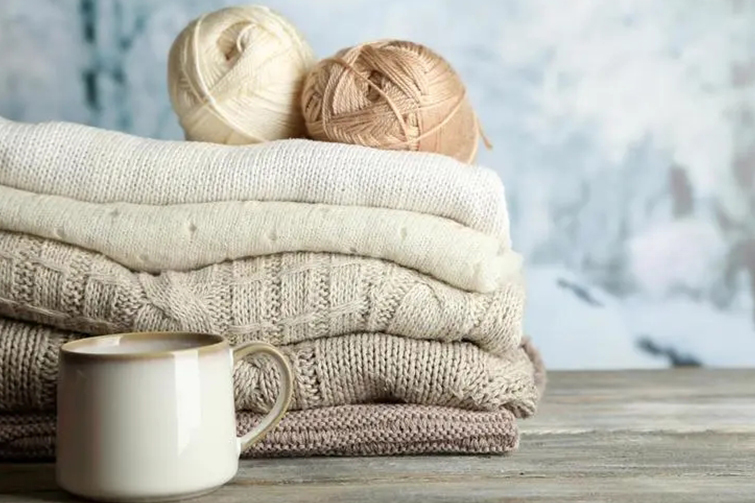

The Quality of Knitted Garments Made in China
China is one of the largest manufacturers of textiles and garments globally, including knitted apparel. Over the years, China has gained a reputation for producing high-quality knitted garments at competitive prices. The country’s knitting industry has developed rapidly, integrating advanced technology, skilled craftsmanship, and a focus on sustainability. However, as with any large-scale manufacturing sector, the quality of knitted garments can vary depending on factors such as the manufacturer, materials used, and production standards. Here's an in-depth look at the quality of knitted garments made in China.
1. Advanced Manufacturing Technology
Chinese manufacturers have invested heavily in modern knitting machinery and technology. Factories in China often use advanced knitting machines that can produce complex patterns, precise textures, and high-quality finishes. This technological advancement allows for efficiency and consistency in the production process, ensuring that knitted garments meet global standards for durability and craftsmanship.
- Computerized knitting machines: These machines ensure precision in stitch work, creating seamless garments with minimal errors.
- Automation: Increased automation in Chinese knitting factories reduces human error and improves production speed without compromising quality.
2. Wide Range of Materials
One of the key factors that affect the quality of knitted garments is the type of material used. Chinese manufacturers offer a wide variety of fabrics, including natural fibers like cotton, wool, and cashmere, as well as synthetic materials like acrylic and polyester. The quality of these fabrics can vary, but many Chinese manufacturers source high-quality raw materials from reputable suppliers to ensure that the final product is comfortable, durable, and aesthetically pleasing.
- High-quality cotton: Many Chinese manufacturers use premium cotton, which is soft, breathable, and ideal for everyday wear.
- Luxurious cashmere: China is one of the largest producers of cashmere, particularly from the Inner Mongolia region, which is known for producing some of the finest cashmere wool in the world.
- Blends: Manufacturers often create fabric blends, such as cotton and wool, or acrylic and polyester, to offer a balance of comfort, warmth, and affordability.
3. Skilled Workforce
China’s knitting industry benefits from a highly skilled workforce with extensive experience in textile production. Skilled workers are essential for maintaining the high standards of quality required for premium knitted garments. Workers in China are trained in various aspects of garment production, including knitting, finishing, and quality control.
- Attention to detail: Skilled workers ensure that each piece is carefully inspected for defects and irregularities before it reaches the market.
- Hand-finishing techniques: In high-end knitted garments, hand-finishing techniques are often used to enhance the quality and ensure a luxurious feel.
4. Variety of Knitting Techniques
Chinese manufacturers are adept at employing a wide range of knitting techniques to create different styles and textures. From basic ribbed knits to intricate cable patterns, China’s factories can produce diverse and fashionable knitted garments suitable for different markets and seasons. This versatility in knitting techniques allows manufacturers to meet the demands of both high-end fashion brands and mass-market retailers.
- Jacquard knitting: This technique is commonly used to create intricate patterns in sweaters and scarves.
- Seamless knitting: Advanced seamless knitting technology results in garments that are more comfortable and durable, with no seams to irritate the skin.
5. Focus on Sustainability
As environmental awareness grows, many Chinese manufacturers are focusing on sustainable practices in the production of knitted garments. Factories are adopting eco-friendly materials, such as organic cotton and bamboo, and implementing energy-efficient processes to reduce their carbon footprint. Additionally, waterless dyeing technologies and recycling initiatives are being integrated into the knitting industry to create more environmentally friendly products.
- Eco-friendly materials: Many manufacturers now offer garments made from sustainable fabrics like organic cotton and bamboo, which are biodegradable and produced with minimal environmental impact.
- Ethical production: Some factories prioritize ethical labor practices and environmentally conscious production methods, ensuring that their knitted garments meet international sustainability standards.
6. Quality Control and Certification
Chinese manufacturers adhere to strict quality control processes to ensure that their knitted garments meet the required standards for export. Many factories follow international certifications such as ISO (International Organization for Standardization) and OEKO-TEX, which guarantee that the garments are free from harmful substances and produced under safe and ethical conditions.
- ISO certification: Many manufacturers are ISO certified, which means they meet international quality management standards.
- OEKO-TEX certification: Garments with this certification are free from harmful chemicals, making them safe for consumers and environmentally friendly.
7. Challenges and Considerations
While Chinese manufacturers are known for producing high-quality knitted garments, it’s important to acknowledge that the quality can vary depending on the manufacturer and the price range. Lower-cost garments may use cheaper materials or simpler knitting techniques, resulting in lower durability or comfort. To ensure the best quality, consumers should look for reputable brands or manufacturers that emphasize material quality, craftsmanship, and ethical production.
- Reputable manufacturers: Choosing garments from well-established manufacturers or brands ensures higher quality and better materials.
- Price vs. quality: While China offers affordable options, it’s essential to balance price with quality to ensure the garment meets your expectations.
Conclusion
Knitted garments made in China can be of excellent quality, especially when produced by reputable manufacturers using high-quality materials and modern techniques. With advanced knitting technology, a skilled workforce, and a focus on sustainability, China continues to be a leading producer of both mass-market and luxury knitted apparel. However, as with any product, it is essential to consider the specific manufacturer and fabric quality when purchasing knitted garments to ensure you get a product that meets your expectations for comfort, durability, and style.







